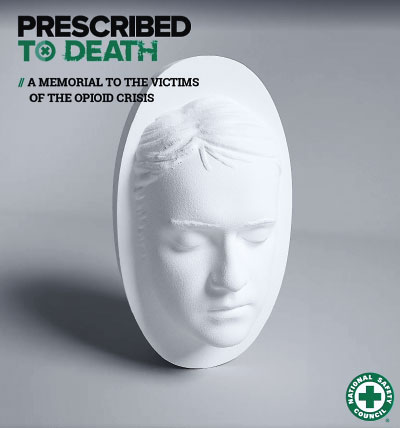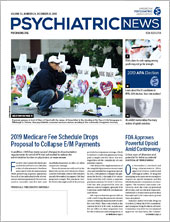As the nation grapples with the worst drug crisis in United States history, the National Safety Council (NSC) wants to put a face on the toll it has taken. NSC’s exhibit “Prescribed to Death: A Memorial to the Victims of Opioid Crisis” is traveling around the country and may be coming to a city near you. It seeks to personalize the data points and drive its visitors to action.
One in four Americans has been directly impacted by the opioid crisis, yet NSC poll data show that 40 percent still do not consider it to be a threat to their own family. “The most important thing about this crisis is not the statistics, but the faces,” explained NSC President and CEO Deborah A.P. Hersman. NSC is a nonprofit that works to eliminate preventable deaths. “The Prescribed to Death memorial not only brings visitors face to face with this everyday killer, but also encourages actions that will help us eliminate these preventable deaths.”
The centerpiece of the exhibit is a black wall of pills, row after row, with each pill intended to represent one of the 22,000 individuals lost to prescription opioid overdose in 2015—the year the memorial was conceptualized. Onto each pill has been carved the face of an individual who lost his or her life to the opioid epidemic.
Infinity mirrors affixed to both ends of the wall make it appear to go on forever, reminding visitors that the opioid crisis, too, will continue “unless we do something about it,” said Maureen Vogel, an NSC spokesperson.
Messaging added onto the sides of the wall explains to visitors that the opioid overdose death toll has tragically continued since the memorial’s inception: of the 42,000 individuals who died from opioid overdoses in 2016, about 40 percent (17,000) involved prescription opioid analgesics.
When NSC unveiled the memorial at its Chicago headquarters in 2017, a computer-driven engraving machine worked nearby, continuously carving a new face onto a pill every few minutes and dropping it onto a table to signify another life lost. “Now, it’s every 12 minutes that someone is overdosing on opioids in our country,” Vogel said.
A separate installation adjacent to the memorial wall invites visitors to enter the recreated personal space of one individual lost to opioid overdose or one who battled opioid use disorder. Each installation contains personal artifacts: handwritten journal entries; a specially knitted blanket; a card a son had left his mother just prior to his overdose, telling her how much he loved her.
“We want to make sure people understand the opioid crisis is human. It’s not just data points,” Vogel said. “These are real people, just like you and me. They had real relationships … and they’re not here anymore because of something we know how to stop.”
Visitors to the memorial receive a special envelope to allow for safe disposal of unused opioid pills in their homes and an “Opioids: Warn Me” label to affix to their insurance cards, empowering them to discuss with prescribers the risks of taking opioids—and explore whether other pain relief options are available.
The exhibit traveled to six additional cities throughout the country in 2018: Fayetteville, Ark.; Pittsburgh; Atlanta; Buffalo, N.Y.; Houston; and Washington, D.C., where it was displayed in a tent on the Ellipse in President’s Park at the White House. NSC spent more than $1 million to create the exhibit and is seeking sponsors to help bring it to other locations and events in 2019. ■
View the “Prescribed to Death” memorial online
here.


